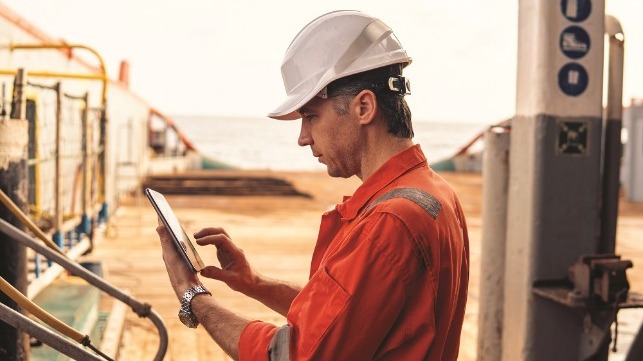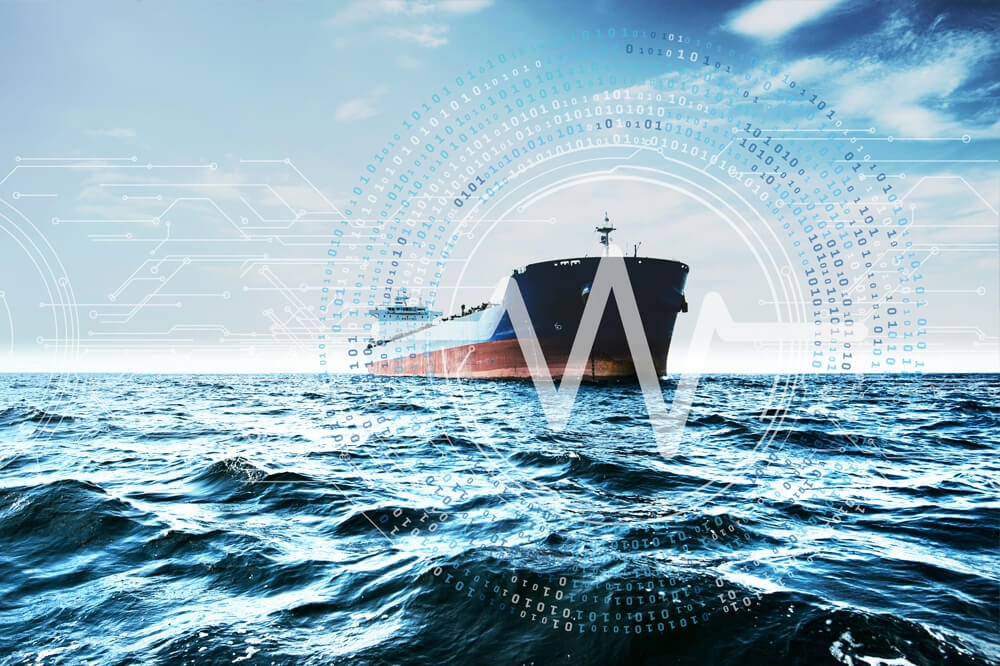How Using Dedicated Maritime IoT Connectivity Produces Cost Savings

As the maritime industry continues to expand its use of vessel connectivity and the true digital vessel, the benefits are growing rapidly. Not only do vessels reap value from providing connectivity for crew welfare and operational use, but IoT solutions are also enabling such functions as remote condition monitoring, performance optimization, and e-survey for compliance. For both crew connectivity and IoT connectivity, the vessel relies on fast, reliable, and proven satellite technology provided by high throughput satellites (HTS) covering the world’s oceans.
In particular, the benefits of using dedicated maritime IoT connectivity (meaning a separate antenna system from the primary satcom system) are gaining attention among maritime data analytics experts and maritime cyber experts alike. Vessels with a dedicated maritime IoT connectivity solution have taken the important step of separating IT (information technology) connectivity from OT (operational technology, which manages physical processes and the machinery used to carry them out) connectivity.
For maritime data analytics experts, high-speed dedicated connectivity enables actionable insights faster—it gives them control of their own bandwidth so the data gets to onshore experts in real-time, all the time. This enables immediate action to improve efficiencies in tracking, routing, safety, security, fuel consumption, and emissions. Dedicated connectivity also enables dedicated high-speed remote support video interventions while a vessel is at sea, without competing for shared bandwidth from the ship’s core operations or crew.
Maritime cyber experts view separate pipelines for IT and OT connectivity as critically important for reducing cyber risks. CyberOwl CEO Daniel Ng noted in a recent webinar, “Separation across the entire pipeline changes and removes the margin for human error, fundamentally changing it from a cybersecurity point of view.” Vessels with a dedicated IoT connectivity solution are following IMO 2021 cybersecurity recommendations and at the same time are creating the optimum digital vessel tech infrastructure for all their ship’s needs, whether it is operations, crew communications, or real-time IoT data transfers.
In reality, however, all too many vessels are still trying to use an existing satcom system to do too many things, creating bandwidth contention conflict and increasing cyber risk. This scenario also limits the real benefits of IoT, which can only be realized with continuous real-time IoT data transfer, high speed remote interventions, and the ability to take action at sea. Affordable high-speed dedicated IoT connectivity, on the other hand, enables shoreside monitoring by an IoT service company, technical services vendors, and OEMs of the assets onboard a ship with control over their data flow and the ability to do video interventions to fix problems in real time. With the advent of remote services and a new era of technical ship management, numerous stakeholders interested in vessel efficiency have the ability to monitor and take action at deep sea to reduce maintenance costs and delays in port without bandwidth conflict.
For dedicated IoT connectivity, a solution such as KVH Watch® is an all-inclusive, no-commitment choice for IoT and digital ship stakeholders to reap cost savings and performance benefits with real-time data flow while separating OT and IT.
If your vessel is trying to make an existing SATCOM connectivity solution do double duty—as the communications system for crew connectivity and operational functions as well as the system for IoT data transfer—it’s time to adopt a dedicated IoT connectivity solution. Learn more by downloading the KVH case study: “Enabling the Digital Ship through Dedicated IoT Connectivity.”
KVH hosted a virtual panel discussion about IoT connectivity during London International Shipping Week earlier this month. Click here to view the web recording.
This post is sponsored by KVH Watch.
The opinions expressed herein are the author's and not necessarily those of The Maritime Executive.

